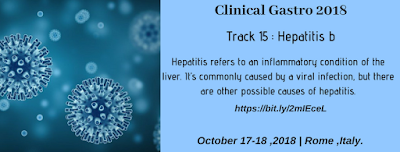Track 10 : CURRENT RESEARCH IN GASTROENTEROLOGY
#Gastroenterologyresearch #Hepatology
Call for abstract
For more details visit : https://bit.ly/2mIEceL
#Gastroenterologyresearch #Hepatology
Call for abstract
For more details visit : https://bit.ly/2mIEceL

















